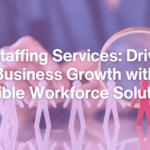Choosing the right technology stack for a custom software development solution is akin to selecting the perfect set of tools for a craftsman. It is a critical decision that can impact the success and scalability of your software development project.
From frontend frameworks to backend languages, and from databases to hosting platforms, each component of the technology stack plays a vital role in shaping the final product.
What is a technology stack for software development solutions?
A technology stack refers to a combination of programming languages, frameworks, libraries, tools, and infrastructure used to develop and run software applications. It’s like a recipe that developers follow to build functional and robust software development solutions.
Additionally, there are infrastructure components like servers, hosting services, and deployment tools that support the application’s operation. The tech stack decisions can streamline development, improve performance, and enhance the scalability and maintainability of software solutions.
How to choose the right tech stack for your custom software project?
We will explore ten essential considerations when choosing the best technology stack, along with the pros and cons of popular options.
Project Requirements Analysis
Before diving into the tech stack decisions, it’s crucial to thoroughly understand the project requirements. Identify key features, performance expectations, scalability needs, security concerns, and any specific integrations. This analysis will serve as a guiding framework throughout the decision-making process.
Pros: Tailoring your technology stack to project requirements ensures optimal performance and functionality. It minimizes the risk of over-engineering or under-delivering.
Cons: Detailed requirements analysis can be time-consuming, especially for complex projects. However, investing time upfront can prevent costly rework later.
Scalability and Performance
Scalability is vital for accommodating growth and handling increased loads. Evaluate the scalability potential of each technology component, considering factors like concurrent users, data volume, and anticipated traffic patterns. Additionally, assess the performance metrics such as speed, responsiveness and resource utilization for the best software development solutions.
Pros: A scalable and high-performing technology stack can support business growth, enhance user experience, and ensure consistent reliability.
Cons: Achieving optimal scalability and performance may require more advanced or specialized technologies, which can increase development complexity and cost.
Community Support and Ecosystem
Choose the best technology stacks with robust community support and a thriving ecosystem. Active communities provide access to resources like documentation, tutorials and third-party libraries. Additionally, a vibrant ecosystem indicates longevity and ensures ongoing updates, bug fixes, and security patches.
Pros: Community support fosters collaboration, knowledge sharing, and rapid problem resolution. It accelerates development and reduces the risk of encountering roadblocks.
Cons: Emerging or niche technologies may lack mature ecosystems, making it harder to find resources and expertise.
Developer Skill Set and Availability
Assess your team’s skills and familiarity with different technologies. Take a tech stack decision that aligns with your developers’ expertise to minimize learning curves and maximize productivity. Additionally, consider the availability of developers in the job market proficient in the chosen technologies.
Pros: Leveraging existing skills enhances development efficiency and reduces the need for extensive training or hiring. It also ensures a smoother transition during maintenance and support phases.
Cons: Limiting your choices based solely on current skill sets may overlook innovative or more suitable technologies.
Security Considerations
Prioritize security throughout the technology selection process. Evaluate the security features and track records of frameworks, languages, libraries, and platforms. Look for built-in security mechanisms, regular security updates and community responsiveness to vulnerabilities.
Pros: A secure technology stack mitigates the risk of data breaches, cyber attacks, and other security threats, safeguarding sensitive information and maintaining user trust.
Cons: Overlooking security aspects can lead to costly breaches, regulatory non-compliance, reputational damage and legal liabilities.
Flexibility and Adaptability
During custom software development solutions, opt for technologies that offer flexibility and adaptability to accommodate evolving business needs and industry trends. Avoid rigid or proprietary solutions that may lock you into a specific vendor or architecture, limiting future scalability and innovation.
Pros: A flexible technology stack enables agility, allowing you to pivot quickly in response to market changes, user feedback, or emerging opportunities.
Cons: Highly specialized or niche technologies may lack the versatility needed to address diverse requirements or integrate with other systems seamlessly.
Cost and Budget Constraints
Evaluate the cost implications of each technology component, including licensing fees, development resources, infrastructure requirements and ongoing maintenance expenses. Consider your budget constraints and long-term cost projections when making tech stack decisions.
Pros: Choosing cost-effective technologies helps optimize resource allocation, maximize ROI, and ensure project viability within budget constraints.
Cons: Opting for purely budget-driven decisions without considering other factors can lead to technical debt, performance limitations, and scalability bottlenecks.
Compatibility and Integration
Assess the compatibility of different technology components within the stack and their ability to integrate smoothly with existing systems, third-party services, and future expansion plans. Avoid compatibility issues and interoperability challenges that can hinder development progress and functionality.
Pros: A cohesive and interoperable technology stack streamlines development, simplifies maintenance, and facilitates seamless data exchange between components.
Cons: Poorly integrated or incompatible technologies may require custom workarounds, middleware layers, or costly refactoring to achieve interoperability.
Long-Term Support and Maintenance
Consider the long-term support and maintenance requirements of each technology component, including version updates, bug fixes, and end-of-life support. Choose technologies with established vendors or communities committed to long-term support and backward compatibility.
Pros: Prioritizing long-term support minimizes the risk of obsolescence, ensures ongoing stability, and reduces the total cost of ownership over the software’s lifecycle.
Cons: Relying on technologies with uncertain future support or rapidly evolving ecosystems may entail migration efforts or vendor lock-in down the line.
Performance Benchmarks and Case Studies
Lastly, gather performance benchmarks and case studies of similar projects built with different technology stacks. Analyze real-world examples to assess the strengths, weaknesses, and trade-offs of each option in terms of performance, scalability, reliability, and maintainability.
Pros: Learning from past experiences and industry best practices provides valuable insights for making informed technology decisions and avoiding common pitfalls.
Cons: Benchmarking and case studies may not perfectly align with your project’s unique requirements or constraints, requiring careful interpretation and customization.
Remember that technology is just a means to an end, and the ultimate goal is to deliver value to your users and stakeholders efficiently and effectively. If you are one in the search of custom software development, contact us to select your tech stack.





Leave a comment